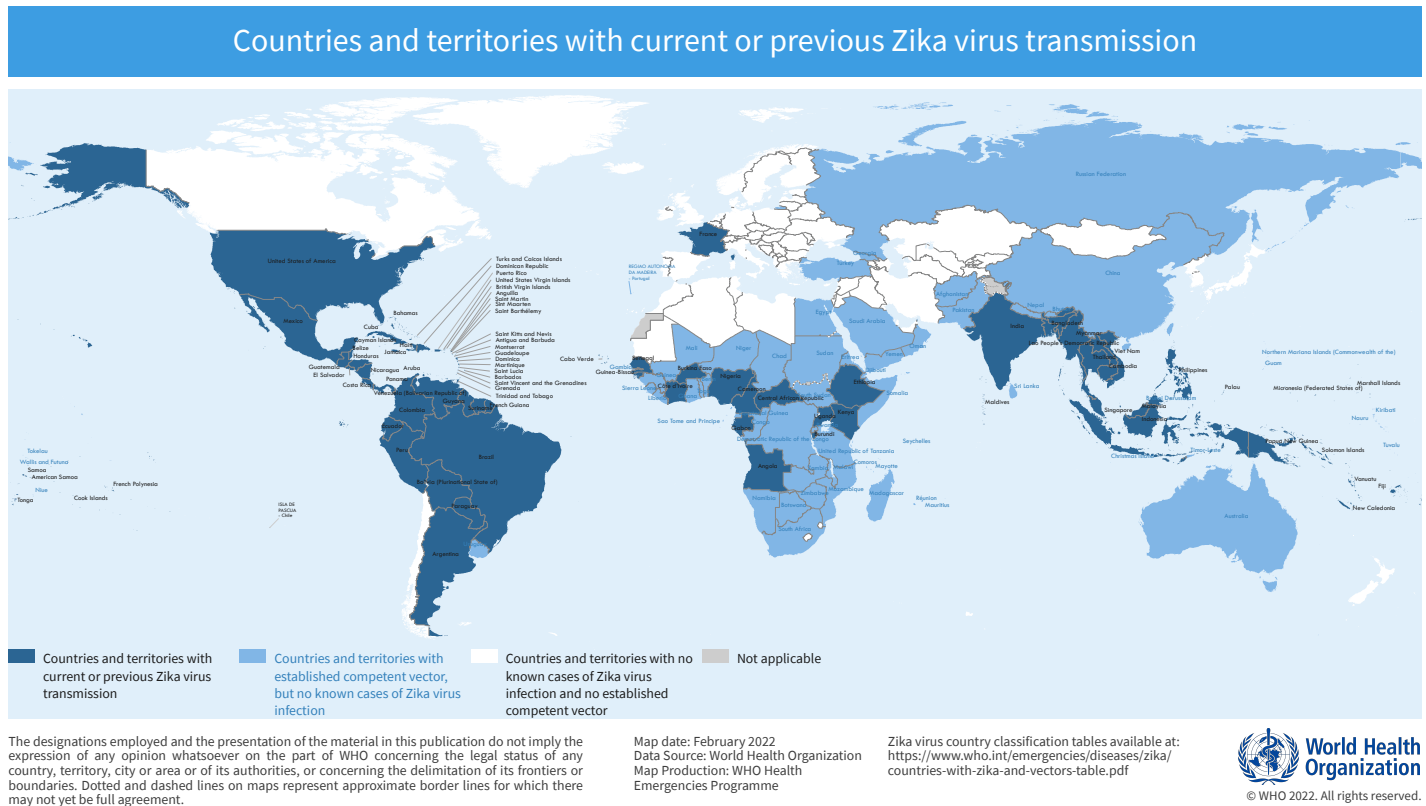Zika virus disease
Zika virus is primarily transmitted by the bite of an infected mosquito
from the Aedes genus,
mainly Aedes aegypti,
in tropical and subtropical regions. Aedes mosquitoes
usually bite during the day, peaking during early morning and late
afternoon/evening. This is the same mosquito that transmits dengue, chikungunya
and yellow fever.
Zika virus is also transmitted from mother to fetus during
pregnancy, through sexual contact, transfusion of blood and blood products, and
organ transplantation.
WHO declared a public health emergency of international concern regarding microcephaly, other neurological disorders and Zika virus from February to November 2016. Cases of Zika virus disease declined from 2017 onwards globally; however, Zika virus transmission persists at low levels in several countries in the Americas and in other endemic regions. To date, a total of 89 countries and territories have reported evidence of mosquito transmitted Zika virus infection, however surveillance remains limited globally.
No vaccine is yet available for the prevention or treatment of
Zika virus infection. Development of a Zika vaccine remains an active area of
research
Symptoms are generally mild including fever, rash, conjunctivitis, muscle and joint pain, malaise, and headache, and usually last for 2–7 days.
Complications of Zika virus disease
Zika virus infection during pregnancy is a cause of microcephaly and other congenital abnormalities in the developing fetus and newborn. Zika infection in pregnancy also results in pregnancy complications such as fetal loss, stillbirth, and preterm birth.
Zika virus infection is also a trigger of Guillain-Barré syndrome, neuropathy and myelitis, particularly in adults and older children.
Research is ongoing to investigate the effects of Zika virus infection on pregnancy outcomes, strategies for prevention and control, and effects of infection on other neurological disorders in children and adults.
Personal protection measures include wearing clothing (preferably light-coloured) that covers as much of the body as possible; using physical barriers such as window screens and closed doors and windows; and applying insect repellent to skin or clothing that contains DEET, IR3535 or icaridin according to the product label instructions.
Young children and pregnant women should sleep under mosquito nets if sleeping during the day or early evening. Travellers and those living in affected areas should take the same basic precautions described above to protect themselves from mosquito bites.
Prevention of sexual transmission of Zika virus
Aedes mosquitoes breed in small collections of water around homes, schools, and work sites. It is important to eliminate these mosquito breeding sites, including: covering water storage containers, removing standing water in flower pots, and cleaning up trash and used tires. Community initiatives are essential to support local government and public health programs to reduce mosquito breeding sites. Health authorities may also advise use of larvicides and insecticides to reduce mosquito populations and disease spread.
Vector control operations framework for Zika virus



















